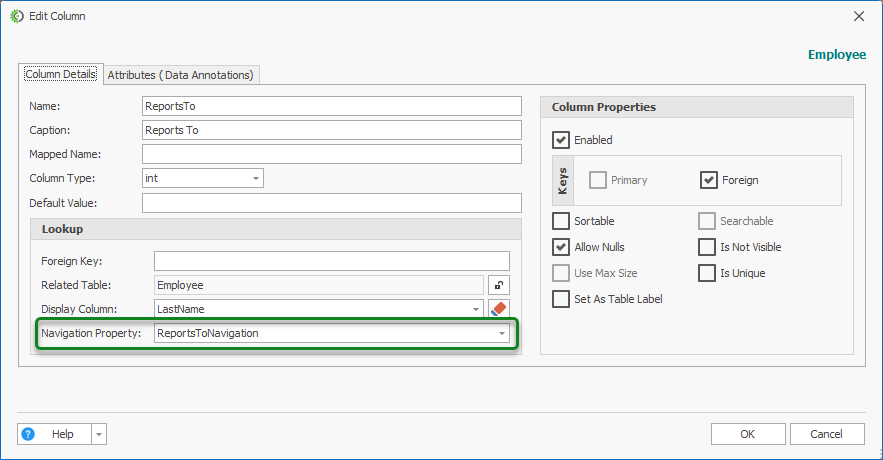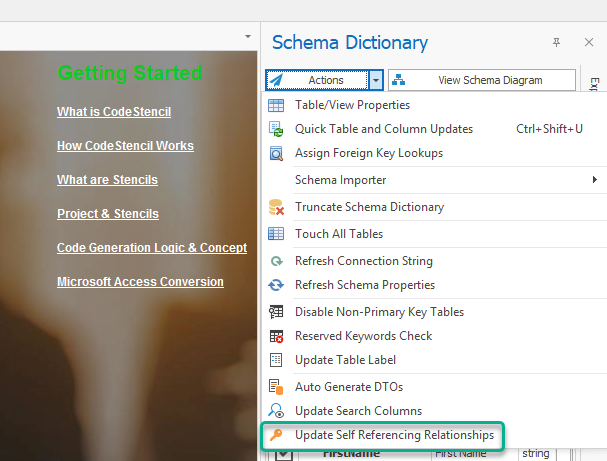Self-Referencing Relationships
In an ORM like Entity Framework (EF), a self-referencing table is one where a column acts as a foreign key pointing to the primary key of the same table. This design allows the table to establish relationships within its own data, enabling the representation of hierarchical or tree-like structures. Such structures are useful for modeling real-world scenarios where entities are connected in parent-child relationships.
For example:
- Employees reporting to a manager who is also an employee in the same table. This allows you to track reporting lines and organizational hierarchy within a single Employees table.
- Categories that have a parent category, enabling the creation of nested or multi-level category trees, which are common in product catalogs or content management systems.
- Comments that can have a parent comment, supporting threaded or nested replies. This structure makes it easy to manage conversations that branch off from a main post or comment.
Using self-referencing tables in EF helps maintain data integrity while simplifying queries and updates related to these hierarchical relationships.
The Chinook database is an excellent example of a real-world schema that uses a self-referencing relationship in its Employee table to model the organizational hierarchy.
The Employee table is used to store details of all employees, and it includes a foreign key column that points back to its own primary key to establish the manager-subordinate relationship.
Chinook's Self-Referencing Table: Employee
The Chinook database's Employee table uses a self-referencing foreign key to model the "reports to" relationship.
| Column Name | Data Type | Key/Constraint | Purpose |
| EmployeeId | INTEGER | Primary Key | Unique identifier for the employee. |
| ReportsTo | INTEGER | Foreign Key | References the EmployeeId of their manager. |
| FirstName, LastName, Title, etc. | Other employee details. |
The ReportsTo column contains the EmployeeId of the employee who is the manager. If an employee reports to no one (like the CEO or President), the ReportsTo column is NULL.
Entity Framework (EF) Model Configuration
In EF, this relationship is typically configured in the Employee class using two navigation properties:
-
Manager: A single reference property to the manager (the "parent" in the hierarchy). -
Subordinates: A collection property of all employees who report to this employee (the "children" in the hierarchy).
C# Entity Class Example (EF Core)
public class Employee{ // Primary Key public int EmployeeId { get; set; } // Foreign Key to the Manager public int? ReportsTo { get; set; } // int? because the top manager's ID is NULL public string FirstName { get; set; } public string LastName { get; set; } public string Title { get; set; } // Navigation Property for the Manager (One-to-Zero/One) // Points up the hierarchy public Employee Manager { get; set; } // Navigation Property for Subordinates (One-to-Many) // Points down the hierarchy public ICollection<Employee> Subordinates { get; set; }}
EF Query Examples using the Hierarchy
With this self-referencing structure and the navigation properties configured in EF, common hierarchical queries become simple and intuitive.
1. Finding an Employee's Manager
To find the manager for a specific employee (e.g., employee with EmployeeId = 3), you just follow the single reference navigation property.
// Find the Manager of the Employee with ID 3var employeeId = 3;var employeeWithManager = context.Employees .Include(e => e.Manager) // Eagerly load the Manager's data .Where(e => e.EmployeeId == employeeId) .Select(e => new { EmployeeName = $"{e.FirstName} {e.LastName}", ManagerName = $"{e.Manager.FirstName} {e.Manager.LastName}" }) .FirstOrDefault(); // Output will be: EmployeeName: Jane Peacock, ManagerName: Nancy Edwards
2. Finding an Employee's Direct Subordinates
To find all employees who directly report to a manager (e.g., manager with EmployeeId = 2), you use the collection navigation property.
// Find all employees reporting to the Manager with ID 2var managerId = 2;var managerWithSubordinates = context.Employees .Include(e => e.Subordinates) // Eagerly load the collection of subordinates .Where(e => e.EmployeeId == managerId) .Select(e => new { ManagerName = $"{e.FirstName} {e.LastName}", Subordinates = e.Subordinates.Select(s => $"{s.FirstName} {s.LastName}") }) .FirstOrDefault(); // Output will be: ManagerName: Nancy Edwards, Subordinates: [Jane Peacock, Margaret Park, Steve Johnson]
Navigation Properties In CodeStencil
CodeStencil stores the Navigation property here:
Note: This is updated automatically when you do a database import or when you generate a schema from the Schema Library.
You can also generate this manually from the Actions menu in the Schema Dictionary:


